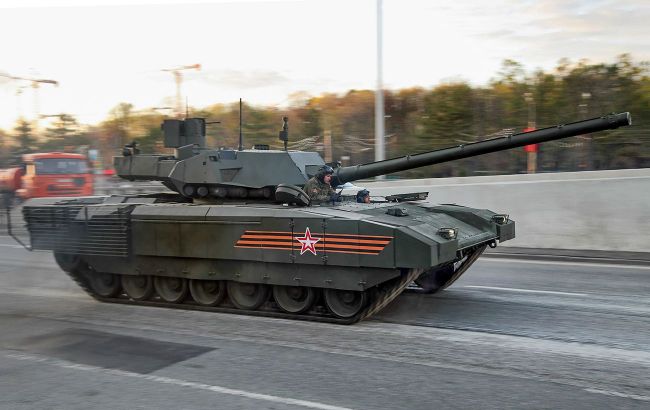UK intelligence explains Moscow's refusal to send new Armata tank to Ukraine frontlines
 Armata tank (wikipedia.org)
Armata tank (wikipedia.org)
Moscow refused to send its latest Armata tanks to the front in Ukraine due to fear of reputational damage from their loss, as well as their insufficient quantity, according to the UK Ministry of Defense.
According to the report, on March 4, Sergey Chemezov, the chair of the Russian military concern Rostec, announced that the most modern Russian main battle tank T-14 Armata had entered service but would not be sent to Ukraine. Chemezov stated that this was due to the high cost, limiting large-scale manufacturing of Armata tanks.
The Armata tank debuted on Victory Day in 2015 and got stuck during rehearsals. The 1st Guards Tank Army was due to receive Armata tanks in 2021, but it is unlikely that any deliveries to frontline units have taken place, according to the report.
According to British intelligence, the Armata tank was spotted during exercises in southern Russia in December 2022, while Kremlin news agencies claimed it would be used in Ukraine.
"To date, it is almost certain that the T-14 Armata MBT has not been deployed to Ukraine. This is highly likely due to the potential reputational damage of losing a 'prestige' vehicle in combat and the requirement to produce greater quantities of MBTs which can only be satisfied by other variants," the UK Ministry of Defense stated.
Armata tanks
Armata tank is most famous for stopping in the middle of the square during a military parade rehearsal in May 2015.
In March 2023, British intelligence reported that units of the 1st Guards Tank Army, the main tank formation of Russia, would be re-equipped with T-62 tanks to compensate for losses. Previously, the army was supposed to receive next-generation T-14 Armata tanks from 2021 onwards.
According to the International Institute for Strategic Studies (London), Russia lost over 3,000 tanks during the invasion of Ukraine, equivalent to its entire pre-war arsenal in action. However, it has lower-quality armored vehicles in storage, which will last for three years.

